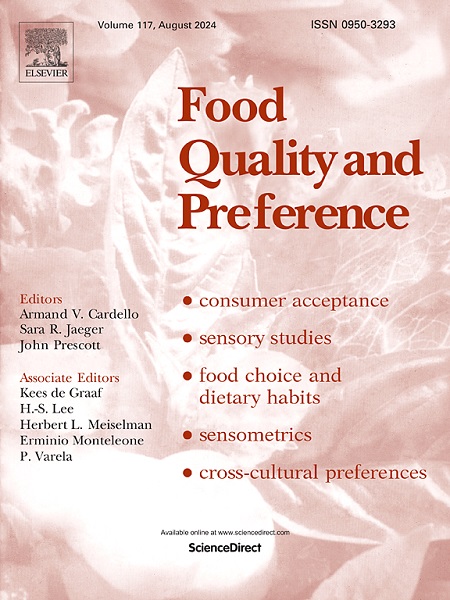Consumer preferences for organic, animal welfare-friendly, and locally produced meat in workplace canteens: Results of a discrete choice experiment in Germany
IF 4.9
1区 农林科学
Q1 FOOD SCIENCE & TECHNOLOGY
引用次数: 0
Abstract
Although Germany is one of the biggest markets for organic food, this holds true only for the retail sector, while the sales share of organic food in the country's out-of-home consumption sector remains remarkably low. Since workplace canteens constitute a major subsector within Germany's out-of-home consumption sector, increasing the consumption of organic food in canteens would help contribute to more sustainable agricultural and food systems. To inform future efforts aimed at realising this potential, we conducted an online choice experiment with 834 regular canteen customers in Germany to identify their preferences for dishes with meat from organic, animal welfare-friendly, and local production. Data analysis using mixed logit models revealed that a label for organic production and a label for higher animal welfare standards had significant positive effects on participants' choices of meat dishes. Although these labels had considerably less influence on choices than the dishes themselves and their prices, our results show participants were willing to pay moderately higher prices for canteen dishes with these labels. By contrast, the effects of a label indicating local origin and a label marked “top-rated dish by our guests” (representing a descriptive social norm) were only significant in the case of single dishes. We outline several policy approaches to increase the share of more sustainably produced food in workplace canteens.
消费者对工作场所食堂中有机、动物福利友好型和当地生产的肉类的偏好:德国离散选择实验的结果
尽管德国是最大的有机食品市场之一,但这只适用于零售部门,而有机食品在该国户外消费部门的销售份额仍然非常低。由于工作场所食堂是德国户外消费领域的一个主要分部门,因此增加食堂有机食品的消费将有助于促进更可持续的农业和食品系统。为了为实现这一潜力的未来努力提供信息,我们对德国834名食堂常客进行了在线选择实验,以确定他们对有机肉类、动物福利友好型肉类和当地生产的菜肴的偏好。使用混合logit模型进行的数据分析显示,有机生产标签和较高动物福利标准标签对参与者对肉类菜肴的选择有显著的积极影响。虽然这些标签对选择的影响远远小于菜肴本身及其价格,但我们的研究结果显示,参与者愿意为带有这些标签的食堂菜肴支付较高的价格。相比之下,标明产地的标签和标明“客人评价最高的菜”的标签(代表一种描述性的社会规范)的效果仅在单个菜的情况下才有意义。我们概述了几项政策方法,以增加工作场所食堂中更可持续生产的食物的份额。
本文章由计算机程序翻译,如有差异,请以英文原文为准。
求助全文
约1分钟内获得全文
求助全文
来源期刊

Food Quality and Preference
工程技术-食品科技
CiteScore
10.40
自引率
15.10%
发文量
263
审稿时长
38 days
期刊介绍:
Food Quality and Preference is a journal devoted to sensory, consumer and behavioural research in food and non-food products. It publishes original research, critical reviews, and short communications in sensory and consumer science, and sensometrics. In addition, the journal publishes special invited issues on important timely topics and from relevant conferences. These are aimed at bridging the gap between research and application, bringing together authors and readers in consumer and market research, sensory science, sensometrics and sensory evaluation, nutrition and food choice, as well as food research, product development and sensory quality assurance. Submissions to Food Quality and Preference are limited to papers that include some form of human measurement; papers that are limited to physical/chemical measures or the routine application of sensory, consumer or econometric analysis will not be considered unless they specifically make a novel scientific contribution in line with the journal''s coverage as outlined below.
 求助内容:
求助内容: 应助结果提醒方式:
应助结果提醒方式:


